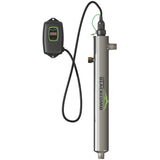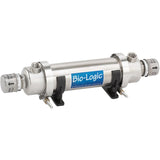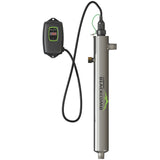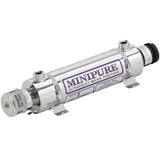How Is UV Lighting Used for Water Purification?
Posted by Dave on for ProLampSales
Purification of water has become a hot topic in recent years, as new studies have shown that most chemicals that are commonly used for water purification, for example chlorine, are slowly losing the battle against certain bacteria and pathogens. These bacteria have become immune to these chemicals over time. In response, talks have now turned to UV light.
There is no known virus or bacteria that is immune to (UV) ultraviolet light. The EPA has recently called on the municipal water-suppliers to treat all water with ultraviolet radiation so as to inactivate key-pathogens like the adenovirus and various other microorganisms, and also to inactivate all parasites and bacteria like the Giardia.
Ultraviolet radiation (UV) destroys all the RNA & DNA of any bacteria, virus and all microscopic organisms present in the water. This essentially renders the organisms unable to reproduce future generations, thus killing them off. Almost all the bottled water that is sold in the developed-world goes through an ultraviolet treatment system before bottling. Reasons for this are simple: ultraviolet light does not affect the flavor, temperature, the nutrients, or even the health benefits of water. More powerful (UV) ultraviolet light bulbs can kill a massive number of micro-organisms in the water and is about 99.99% effective against most germs, like the E-coli.
This is one reason why UV lights are used in pond equipment, along with filters. To prevent algae and other harmful microorganisms from building up and negatively impacting the health of fish and other plants, ultraviolet light bulbs are used in koi and other types of ponds to treat the water.
The purpose of UV lamps is to destroy all organisms that are present in the water before the water is used by people and possibly lead to diseases or infections.The UV light disinfects water and lets the water flow back out again. Ultraviolet (UV) germicidal lamps usually produce energy at about 253.7 nanometers. The lamps that are used for UV purification of water also emit-radiation at about 185 nanometers for ozone-production. These wavelengths are not visible to the naked human eye, though germicidal lamps can also emit visible light.
Lamps are rated by their UV output in (W) watts (but this is not the lamp's wattage). Even with the same length and base of UV bulb, manufacturers rate their bulbs differently in terms of the total UV output. Although you can get pretty close with an estimate and comparison, it is always best to look at the manufacturer's specification sheet or other literature to determine how many UV watts their lamp is rated for. And if you need to measure UV output more specifically, a UVC detector is a wise investment.
- Posted in Ultraviolet Light
Featured Products (View All)
0 Comments




